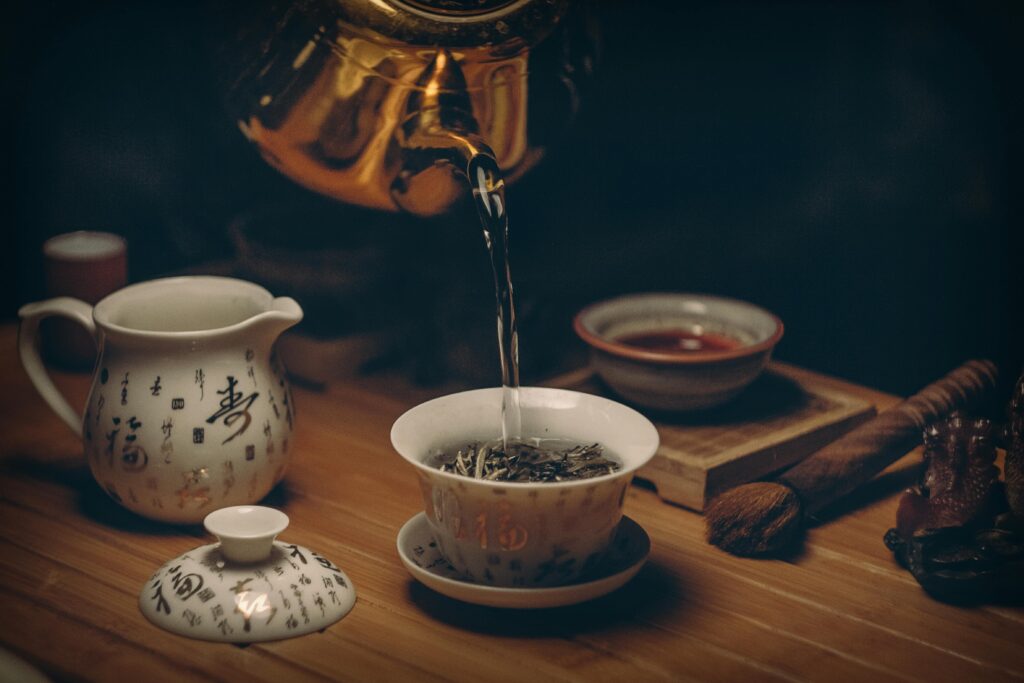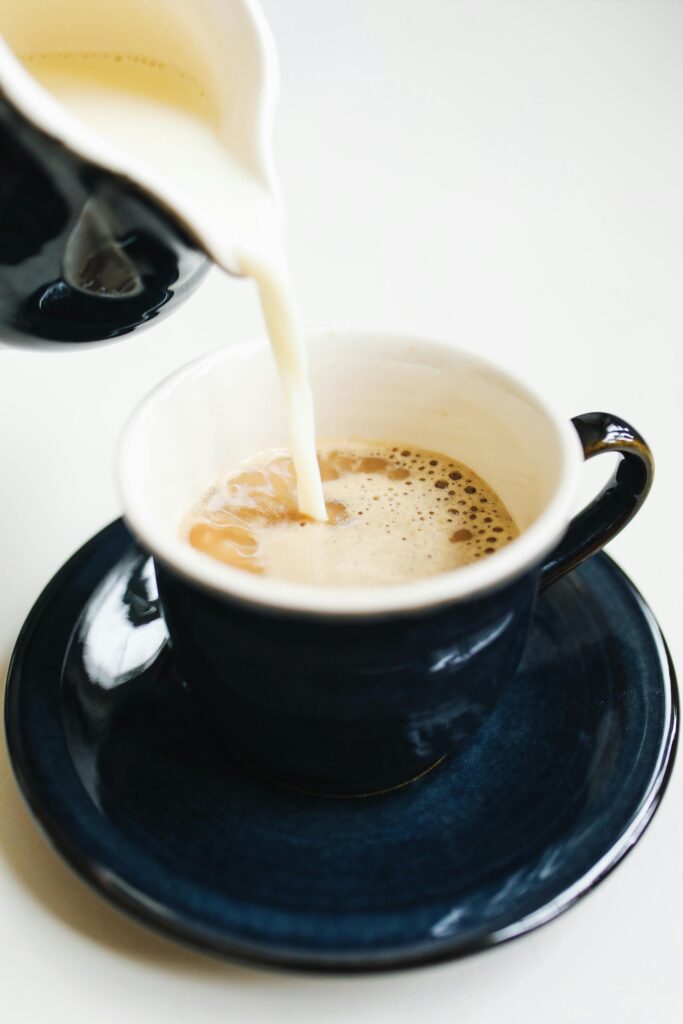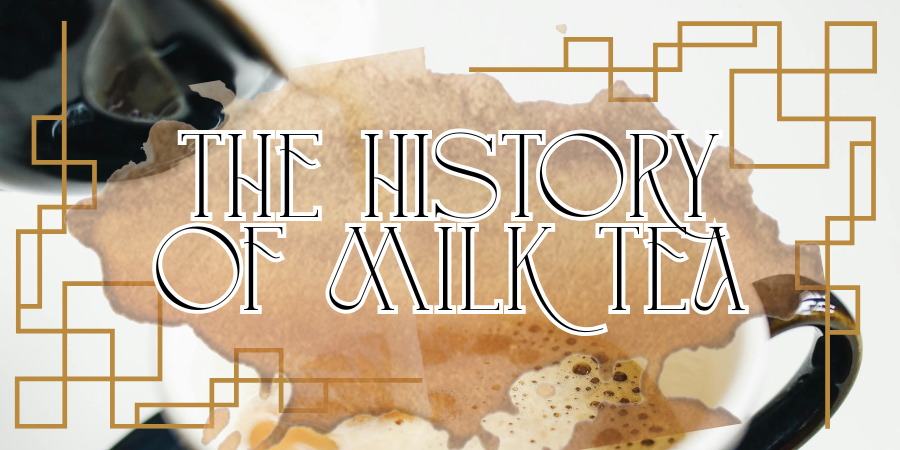Introduction – The Comfort of Tea with Milk
Whether it’s a cozy cup of English breakfast with a splash of cream, a frothy masala chai, or a sweet Hong Kong milk tea, the combination of tea and milk has become a global comfort drink. But have you ever wondered—who was the first person to think of pouring milk into tea? The answer takes us back centuries and across continents, revealing a fascinating blend of cultural habits, social customs, and practical reasoning.

Early Origins of Tea Drinking
Tea in Ancient China
Tea drinking began in China over 1,500 years ago, but it was enjoyed without milk. The earliest tea was green or oolong, brewed for its natural aroma and medicinal properties.
Spread of Tea to Central Asia and the Middle East
As tea traveled along the Silk Road, it mingled with other cultural practices. In Tibet and Mongolia, tea was mixed with butter or yak milk long before Europeans tried the combination.
When Did People Start Adding Milk to Tea?
The First Recorded Instances
The earliest documented case of adding milk to tea in Europe dates back to the mid-1600s in France, well before it became common in Britain.
Cultural Context for Mixing Milk and Tea
At the time, tea was expensive, porcelain cups were delicate, and milk was a common ingredient in many hot drinks, making the pairing both practical and palatable.
France and the 17th Century Origins
Madame de La Sablière and Early French Adoption
Historians credit Madame de La Sablière, a French aristocrat in the late 1600s, as one of the first to popularize adding milk to tea. She claimed it softened the drink’s bitterness and made it gentler on the stomach.
Why the French Added Milk to Tea
In France, tea was often brewed strong and served in fine porcelain cups. Adding milk not only mellowed the flavor but also helped prevent the hot tea from cracking delicate china.
England and the Popularization of Milk Tea
17th Century British Tea Culture
Tea arrived in England in the 1660s and quickly became a fashionable drink among the upper classes. By the early 18th century, adding milk was common in British households.
Protecting Fine Porcelain Cups
One practical reason for the habit: people poured milk into their cups first, then added tea, to prevent the porcelain from cracking under the sudden heat.
Influence of the British East India Company
As the British East India Company increased tea imports, milk tea became an everyday beverage, particularly in working-class communities, where it provided both hydration and nourishment.
Milk Tea in Asia
Hong Kong Milk Tea
A creamy black tea made with evaporated or condensed milk, developed under British colonial influence.
Indian Chai with Milk
Introduced during British rule, Indian chai blends strong black tea, spices, and milk—now a cultural staple.
Tibetan Butter Tea
A unique high-altitude drink combining tea, yak butter, and salt, providing warmth and calories in cold climates.
Scientific and Practical Reasons for Adding Milk to Tea
Reducing Astringency and Bitterness
Milk proteins bind to tannins in tea, softening its bitterness and creating a smoother taste.
Cooling Hot Tea to Prevent Cup Damage
Pouring milk first cools the tea slightly, helping protect fine porcelain from cracking.
Modern Variations of Milk Tea Worldwide
- Bubble Tea (Taiwan) – Sweet, chewy tapioca pearls in milk tea
- Masala Chai (India) – Spiced tea simmered with milk
- Thai Iced Tea – Strong tea with sugar, spices, and condensed milk
Common Myths About Who Invented Milk Tea
One common misconception is that the British invented milk tea. While they popularized it, historical records show the French were likely the first Europeans to mix milk with tea.
Frequently Asked Questions (FAQs)

1. Did China ever drink tea with milk originally?
No, traditional Chinese tea culture did not include milk. Milk tea in China today is mostly a modern adaptation influenced by other regions.
2. Why do the British put milk in tea?
To mellow the flavor, protect delicate cups, and follow tradition.
3. Who was Madame de La Sablière?
A French aristocrat in the 17th century, credited as an early adopter of adding milk to tea.
4. Is milk tea bad for health?
Not necessarily. In moderation, it can be part of a balanced diet, though excess sugar should be avoided.
5. Which came first—milk in coffee or milk in tea?
Milk in coffee was common in Europe before milk in tea became fashionable.
6. What’s the difference between English milk tea and Hong Kong milk tea?
English milk tea uses fresh milk, while Hong Kong milk tea uses evaporated or condensed milk for a richer taste.
Conclusion – A Tradition That Blends Cultures and Flavors
From French salons to British breakfast tables, from Indian street stalls to modern bubble tea cafés, tea with milk is a drink that bridges cultures and centuries. While the French may have been the first Europeans to pour milk into tea, the tradition has been shaped, perfected, and reinvented by countless cultures since. Today, whether you enjoy it hot, iced, spiced, or sweet, milk tea remains a comforting connection to history in every sip.
read here:
- anxiety relief tea
- chai in subcontinent
- chai in language
- matka chai
- pakistani chai
